
Quick Tips
- Before you can clean mold, you need to find it.
- Now that you've located the mold, you need to ascertain the source of moisture that led to its growth.
- When most people are learning how to clean mold, they are instructed to use chlorine bleach. Don't do it!
- First, we will discuss how to clean mold on non-porous materials, such as linoleum, plastic, metal, glass, some hardwoods, brick and cement.
- Unlike their non-porous brethren, porous materials are much harder to save.
- Better to prevent it than have to learn how to clean mold.
Over the last two years of owning my first home, I’ve learned much about this strange fungus commonly called mold – and that there are many reasons besides a snotty nose to be rid of it. Mold does nature’s dirty work, helping to decompose dead organic matter – like the leaves in your yard and that fuzzy-turned-bearded peach you’ve left on the table for a month. Every household has mold, but an excess or concentration of mold (mold colony) can compromise the beauty and structural integrity of your home
Mold feeds by producing digestive enzymes and literally absorbs what it rests upon. In this way it can feast its way through walls and floor boards, weaken brick and even concrete. There is probably some nasty bit of mold eating your house right now. Worse yet, coming into contact with mold by touch or by breathing in spores can lead to a variety of health problems, including nausea, headaches, rashes, confusion or inability to focus, and sinusitis, among other maladies. While there are many reports in the media about other serious health effects, research is ongoing into just how certain molds – especially those that produce mycotoxins – affect the human body. Needless to say, it is vitally important to know how to clean mold and prevent its growth. It is important to note that any mold damage bigger than ten square feet should be handled by a professional, which will be discussed below.
How to Clean and Prevent Mold
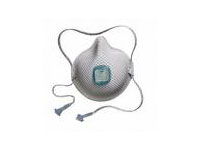 Before you can clean mold, you need to find it. The best tools for the job are our eyes and nose. Mold exists in almost every variety of color and hue, and it can look like slime or fuzz or just plain alien. The most telling sign of growing mold is the dank, musty, earthy smell it produces when growing. If you are doing any investigating into walls, attics, or crawl spaces, you should use protective equipment (PPE). Use some long rubber gloves, air-tight goggles, and at minimum, an N-95 respirator, if not a mask with a HIPA filter. You may have to spend some money, but I always play it safe. Also, wearing this stuff to the door may get you a discount when ordering in food.
Before you can clean mold, you need to find it. The best tools for the job are our eyes and nose. Mold exists in almost every variety of color and hue, and it can look like slime or fuzz or just plain alien. The most telling sign of growing mold is the dank, musty, earthy smell it produces when growing. If you are doing any investigating into walls, attics, or crawl spaces, you should use protective equipment (PPE). Use some long rubber gloves, air-tight goggles, and at minimum, an N-95 respirator, if not a mask with a HIPA filter. You may have to spend some money, but I always play it safe. Also, wearing this stuff to the door may get you a discount when ordering in food.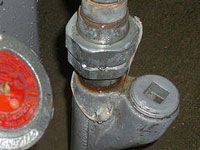 Now that you’ve located the mold, you need to ascertain the source of moisture that led to its growth.Mold loves moisture, and unless you fix the water problem, the mold will return even after the most thorough cleaning. With my house, a leaky roof was dumping water down two stories of wall – creating mold colonies on wood, sheetrock (gypsum board), and insulation. Another common culprit is leaky pipes. Even the slightest drip will wreak major havoc over time. While fixing a water problem can be expensive, your losses will be catastrophic if the water is left unchecked.
Now that you’ve located the mold, you need to ascertain the source of moisture that led to its growth.Mold loves moisture, and unless you fix the water problem, the mold will return even after the most thorough cleaning. With my house, a leaky roof was dumping water down two stories of wall – creating mold colonies on wood, sheetrock (gypsum board), and insulation. Another common culprit is leaky pipes. Even the slightest drip will wreak major havoc over time. While fixing a water problem can be expensive, your losses will be catastrophic if the water is left unchecked.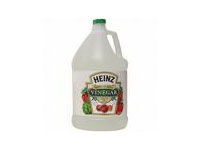 When most people are learning how to clean mold, they are instructed to use chlorine bleach. Don’t do it!Bleach is highly caustic and it actually doesn’t kill mold. If mixed with the wrong stuff, it can produce toxic – even deadly – fumes. In my opinion, you’d do better simply licking the mold away. Vinegar kills mold, bacteria, germs, and also disinfects. Simply add distilled white vinegar to a spray bottle, undiluted. You can get it pretty much anywhere, or order the vinegar straight from Amazon. Another option is tea tree oil, which is all four horsemen of the Apocalypse to mold, but it is far more expensive. If you can swing it, mix three teaspoons to about three cups of water.
When most people are learning how to clean mold, they are instructed to use chlorine bleach. Don’t do it!Bleach is highly caustic and it actually doesn’t kill mold. If mixed with the wrong stuff, it can produce toxic – even deadly – fumes. In my opinion, you’d do better simply licking the mold away. Vinegar kills mold, bacteria, germs, and also disinfects. Simply add distilled white vinegar to a spray bottle, undiluted. You can get it pretty much anywhere, or order the vinegar straight from Amazon. Another option is tea tree oil, which is all four horsemen of the Apocalypse to mold, but it is far more expensive. If you can swing it, mix three teaspoons to about three cups of water.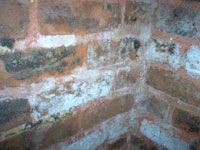 First, we will discuss how to clean mold on non-porous materials, such as linoleum, plastic, metal, glass, some hardwoods, brick and cement. These materials can usually be saved. First, seal off the room you’re working in with some plastic sheeting and tape. Spray the mold cleaner directly and liberally onto the mold and let it sit for at least a day. This gives the solution time to do its dark deed. Next, remove the mold with soap and water. Keeping the mold wet will help prevent mold spores from spreading. Place any waste in a plastic bag and seal it with tape, as even dead mold retains its allergenic properties.
First, we will discuss how to clean mold on non-porous materials, such as linoleum, plastic, metal, glass, some hardwoods, brick and cement. These materials can usually be saved. First, seal off the room you’re working in with some plastic sheeting and tape. Spray the mold cleaner directly and liberally onto the mold and let it sit for at least a day. This gives the solution time to do its dark deed. Next, remove the mold with soap and water. Keeping the mold wet will help prevent mold spores from spreading. Place any waste in a plastic bag and seal it with tape, as even dead mold retains its allergenic properties.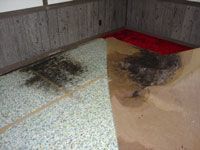 Unlike their non-porous brethren, porous materials are much harder to save. Unless you get to furniture, carpet, ceiling tiles, fabric, and mattresses early (48 hours), you may as well toss them. This should be done carefully. Wet the mold down with soap and water, and then seal the damaged objects in plastic bags. If they are too large, toss them out the nearest window if you have to rather than drag a mold spore parade through your house. Wood can be tricky – some woods are more porous than others and taking the time to clean beams is a judgment call. If the mold has in any way weakened the beam, or it looks like the mold is still in the wood after cleaning, replace it.
Unlike their non-porous brethren, porous materials are much harder to save. Unless you get to furniture, carpet, ceiling tiles, fabric, and mattresses early (48 hours), you may as well toss them. This should be done carefully. Wet the mold down with soap and water, and then seal the damaged objects in plastic bags. If they are too large, toss them out the nearest window if you have to rather than drag a mold spore parade through your house. Wood can be tricky – some woods are more porous than others and taking the time to clean beams is a judgment call. If the mold has in any way weakened the beam, or it looks like the mold is still in the wood after cleaning, replace it.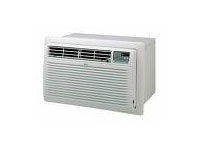 Better to prevent it than have to learn how to clean mold. Mold thrives in 60-75% relative humidity or RH. The EPA recommends maintaining between 30-50% in your household. Having an air conditioner running kills two juicy birds with one stone. During the unmercifully hot days of summer, it will keep your house cool and significantly reduce RH. Up in the North, I’d take out my air conditioner during the winter and replace it with a dehumidifier in places that still have moisture. These machines work great, but they do require frequent cleaning or – as they are constantly sucking up moisture – they will become mold factories.
Better to prevent it than have to learn how to clean mold. Mold thrives in 60-75% relative humidity or RH. The EPA recommends maintaining between 30-50% in your household. Having an air conditioner running kills two juicy birds with one stone. During the unmercifully hot days of summer, it will keep your house cool and significantly reduce RH. Up in the North, I’d take out my air conditioner during the winter and replace it with a dehumidifier in places that still have moisture. These machines work great, but they do require frequent cleaning or – as they are constantly sucking up moisture – they will become mold factories.
How to Clean Mold: Contractors
Finding out that your house is in need of mold remediation is a miserable prospect. Luckily for you, there are whole industries dealing in misery (yippy!). However, misery also attracts swindlers in the same fashion that defenseless nations attract tanks. There are a few things to keep in mind (which I learned the hard way) when hiring a contractor to take care of your mold problem. First of all, hire a certified mold inspector, or, if you’ve got connections, a Counsel Certified Microbial Inspector. Also, don’t hire the same people to assess and then remove your mold unless references are foaming at the mouth about how good they are. A swindler (no surprise here) will tell you that things look really, really bad no matter what – also, if they try to terrify you with medical jargon, tell them to leave. When it comes to references, get plenty, and make sure to get some that are at least a year old. A contractor might make quick work of the mold, and leave you in the lurch when it grows back because of that “quick” work. Make sure their work does not include “encapsulating” (painting over) or using chlorine bleach or other harmful chemicals. Also, never accept a free “post test” from the contractor doing the mold clean up…they aren’t exactly going to be objective about the results. Make sure one test is a few months after the job is finished, and a good contractor should be ok taking at least a portion of their payment at that time.
Cleaning Mold Naturally
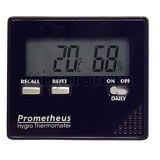 If you’re looking to manage the humidity in your house, a quality hygrometer is the tool for you. Using one of these is an easy way to see if that dehumidifier is bringing your room within the 30-50% relative humidity range. They come in many different styles – some you could picture Dr. Spock using, others Captain Hook.
If you’re looking to manage the humidity in your house, a quality hygrometer is the tool for you. Using one of these is an easy way to see if that dehumidifier is bringing your room within the 30-50% relative humidity range. They come in many different styles – some you could picture Dr. Spock using, others Captain Hook.
 Tea Tree Oil is an essential oil that has many medicinal purposes, and also happens to be a wide-spectrum mold killer. It is far more expensive than using vinegar, but mold fears it more. Brandish this stuff in a water bottle (mix 3 teaspoons to 3 cups of water) and listen carefully – you may hear the mold screaming.
Tea Tree Oil is an essential oil that has many medicinal purposes, and also happens to be a wide-spectrum mold killer. It is far more expensive than using vinegar, but mold fears it more. Brandish this stuff in a water bottle (mix 3 teaspoons to 3 cups of water) and listen carefully – you may hear the mold screaming.
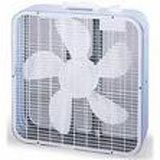 In problem areas like bathrooms, a simple fan may be enough to keep moisture under control. Many bathrooms have inadequate air flow because of dirty or poorly built ceiling ventilation fans. After a shower, I run a box fan with the door open and this gets rid of the humidity much more quickly.
In problem areas like bathrooms, a simple fan may be enough to keep moisture under control. Many bathrooms have inadequate air flow because of dirty or poorly built ceiling ventilation fans. After a shower, I run a box fan with the door open and this gets rid of the humidity much more quickly.